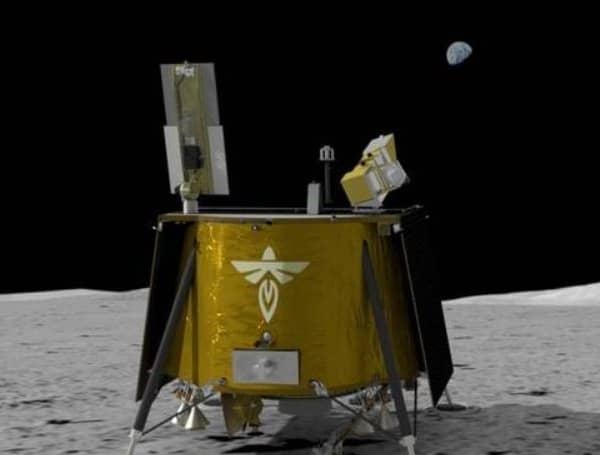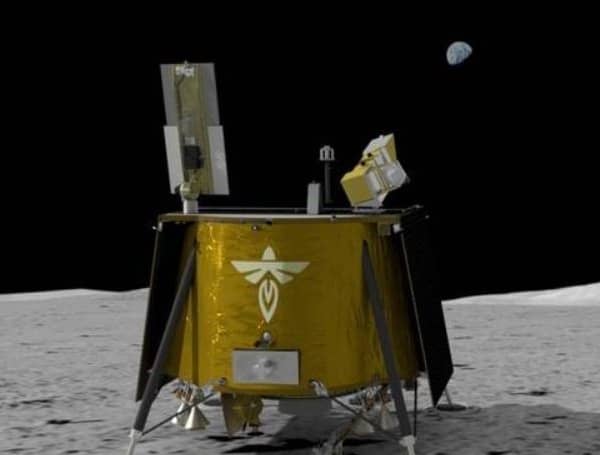NASA is no stranger to sending robots to the Moon. In fact, they sent a robot spacecraft, the Surveyor 3, to the Moon all the way back in 1967, in order to prepare for future manned moon landings.
This robotic craft was affixed with a robotic arm and a sampling scoop, which was used to test the lunar surface for hardness and collect samples of the soil for analysis.
When the astronauts of the Apollo 12 mission landed on the Moon, they landed near the Surveyor 3, to not only show that they could achieve precise landings on the lunar surface but to collect essential equipment from the probe, including the camera, soil sampler, and some of its tubing for analysis.

Credits: Firefly Aerospace
Now that commercial flight and business are to be conducted between the Earth and the Moon, NASA has turned outwards to outside contractors to conduct these robotic lunar deliveries, footing the bill to fund the missions that intend to send robots back to our cratered companion.
Through the Commercial Lunar Payload Services (CLPS) contracts, including big players like SpaceX and Lockheed Martin, there’s a mutual benefit. These customers can add additional payloads to the lander missions.
Two specific commercial landers will arrive on the Moon this year, one from Astrobotic and the other from Intuitive Machines.
As for the missions, Intuitive Machines is flying its Nova-C lander to the dark side of the Moon, to Oceanus Procellarum. Astrobotic will be navigating its Peregrine lander down to the near side of the Moon into a crater known as Lacus Mortis to investigate lunar soil further and other environmental factors of the Moon and will include 11 NASA instruments and tech that will assist it in the process.
As global satellite data expands, space companies rely on AI, according to The Space Report, which you can learn more about The Space Report here.
Beyond this year’s missions, Masten Space Systems will be working with NASA to deliver eight instruments to lay the foundation for human expeditions in 2024. The landing site is the Haworth Crater rim, which is believed to have ice in its permanently shadowed areas and more in reservoirs below the surface. Landing here will provide solar energy access while still giving the instruments access to the crater for research.
Future CLPS flights could include permanently stationed rovers, power supply units, and several experiments, including some that will assist the Artemis missions that will land the first woman and next man on the Moon and allow humans to explore the lunar surface. These missions will provide research that will inevitably lead to the first manned Mars mission.
These mutual partnerships would have never happened in the heyday of NASA’s monopoly over space exploration but with these new ventures and the successful tech fueling SpaceX’s reusable rocket systems, NASA will be able to conduct additional mission-critical deployments by offering their launchpads and equipment to customers.
Ultimately, it seems like a win-win situation all around.
Android Users, Click To Download The Free Press App And Never Miss A Story. Follow Us On Facebook and Twitter. Signup for our free newsletter.
We can’t do this without your help; visit our GiveSendGo page and donate any dollar amount; every penny helps

